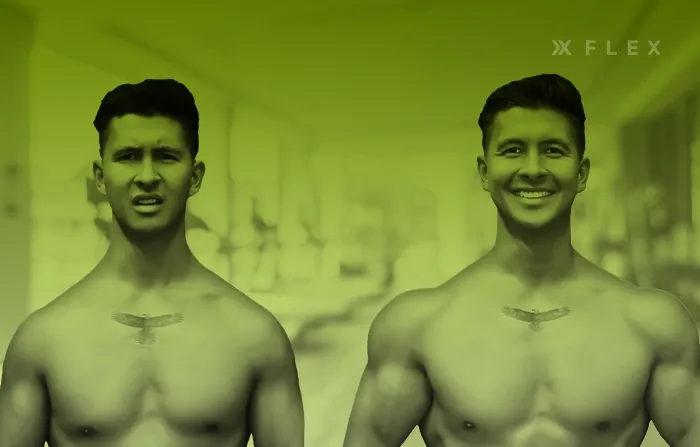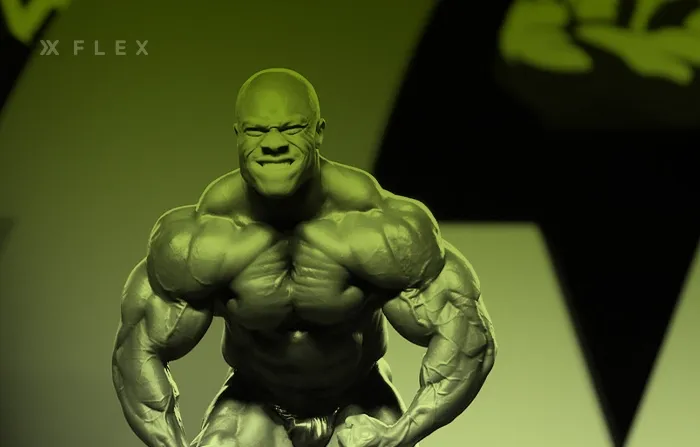How to Work Out for Narrow Clavicles
Find out whether your clavicles are wide or narrow. Learn about the best workouts to widen your narrow shoulders and increase delt size.
Understand how narrow clavicles determine your body balance.
There are a million small things to think about when it comes to building the body of your dreams.
You may have never thought about your clavicular width (weird right?), BUT you’ve probably considered things like how to get a bigger chest, how to workout for broad shoulders, and how to maximize upper body strength.
For men, especially, this is one of the most sought-after fitness goals in the gym, along with getting a bigger chest.
Well, guess what, surprise surprise. Most of those things do have a link to the width of your clavicles!
Get to know more about your clavicle (collarbone) structure and how it impacts your frame.
Narrow Clavicles vs. Wide

So what does it mean to have wide or narrow clavicles anyway? This measurement is determined by comparing your collarbone length to the length of your waist.
Men generally have longer clavicles and broader shoulders compared to women. Clavicular width is mostly genetic.
Although females and males maintain clavicle growth at around the same rates from childhood up until puberty, male clavicle growth speeds up after puberty between the ages of 13-18.
Some research even suggests that your clavicles may continue growing until age 25, at which point they begin to fuse.
One misconception is that all people with shorter clavicles are “small” or can’t grow big shoulders. This is not true.
Think of some of the most famous bodybuilders. A guy like Phil Heath (seven-time Mr. Olympia winner) is known for his bodybuilding prowess.
Yet relative to his frame, his clavicles are not considered long. Regardless, this didn’t stop him from getting big shoulders.
Your shoulder size and look will have to do with your clavicle width, but the ability to put on muscle is mainly genetic as well, although we still don’t yet know which genes influence this within the scientific community.

Even if you think you’re doomed.
How to Tell If You Have Narrow Clavicles
Are your shoulders narrow, broad, or average?
The shoulder-to-waist ratio, aka the Adonis ratio, can be a good way to determine whether your clavicles are wide or narrow.
For men, the ideal shoulder-to-waist ratio is around 1:6, meaning the shoulders are much wider than the waist, giving you a V-taper physique. In women, a slightly lower shoulder-to-waist ratio of 1:4 is considered favorable.
If your ratio is way under these numbers, chances are you may have narrower shoulders. That being said, there’s a lot you can do to balance out your shoulder size and give the illusion of a broader frame.
Moves that train the posterior deltoids, anterior deltoids, glenohumeral joints and latissimus dorsi can all help improve the look of your clavicles.
Training your shoulders with proper form can help you improve the muscle fibers, reduce body fat, and prevent injuries like rotator cuff tears.
Let’s get familiar with a few shoulder workout moves you can try to balance out narrow clavicles.
Shoulder Workout for Narrow Clavicles
Got narrow shoulders? @l14fit hits lat raises to work around narrow clavicle genetics.
Okay, so you’ve determined you have narrow clavicles but would like to get that broad-shouldered, Greek god-like look. Can you out-exercise your bone structure?
No, but don’t despair! There are moves you can do to improve and build your frame for a bigger look.
Strength training with good form will help you work around shoulder pain and can help improve the look of narrow clavicles.
Let’s take a jaunt through a few moves you can hit to build bigger shoulders.
Lateral Raises
Lateral raises are some of the best moves you can do to build up the shoulder muscles for a larger frame.
These hit the trapezius muscles of your upper back that span across the shoulders and neck. They also hit your full deltoid muscle group.
When you practice them regularly, lateral raises are a great way to hit shoulder hypertrophy.
To perform a lateral raise:
- Grab a set of medium-weight dumbbells with an overhand grip.
- Plant your feet hip-width apart.
- Keeping your chest proud and shoulder blades together, lift your arms until they hit shoulder height.
- During this move, don’t lock your arms out, but instead keep a slight bend in your elbows.
- Hold the move for a moment then slowly lower your arms back to your sides.
- Repeat this move as needed. If you’re new, aim for 3-4 sets of 10 reps.
Shrugs
Although you should never say “meh” to mediocre shoulders, sometimes it’s best to just shrug it out.
The shrug is one of the best trap-building moves you can perform to counteract narrow clavicles. To perform a shrug:
- If you are using dumbbells, grab some weights and bring your arms to the sides of your body in an overhand grip. Use a wide grip if you’re using a barbell.
- Roll your shoulders back, engaging the glutes and abdominal muscles for balance.
- Keeping your elbows straight, begin to shrug your shoulders up towards your ears. This is a trap isolation move, so make sure you’re not using other parts of the arms as a driver.
- Once you’re at the top of this movement, pause for a moment, then slowly lower your shoulders back to the starting position.
- Don’t simply let your shoulders drop or slump. This can hurt your neck or lead to pulled muscles. At best, it defeats the purpose of the move.
- Aim for 3 sets of 10-12 reps.
Shoulder Press or Military Press
An overhead press or shoulder press is one of the best moves you need to master if you want to build amazing shoulders.
For a traditional press:
- Unrack a barbell with enough weight for you, resting it across your collarbones and the tops of your shoulders.
- Keep a solid grip on the barbell. Your palms should face away from you (overhand grip). Bend your elbows to keep your weight steady.
- Separate your feet so they’re hip-width apart. If you’re doing the military press variation, keep your feet together.
- Engaging your core, drive the barbell upward, using your shoulder and upper body strength to bring it to an overhead position. Straighten your arms, but do not lock the elbows out.
- Hold for a short pause, then slowly, and with control, lower your barbell back to the collarbones.
- Repeat as needed.
Face Pulls
Face pulls are an underrated move to hit your traps, upper back, deltoids, and rotator cuff. Although it’s not a super heavy lift like a bench press, face pulls work wonders for your shoulder stability.
Here’s how to perform a proper face pull.
- Find a cable pulley and attach a rope handle.
- With one handle in each hand, grab your rope with a comfy grip for you (this can take some trial and error).
- Step away from your pulley so there’s no slack in your cable. You can also do kneeling face pulls if it feels more stable for you.
- Pull your rope attachment toward your head, keeping one hand on each side of the face.
- Hold for a moment, then bring the rope back in front of you with control, maintaining the tension in your pulley.
- Aim for 3-4 sets of 10-12 reps.
Face pulls are not only shoulder strengtheners, they improve your posture too. Standing up straighter and working on your posture can be an even better way to enhance your frame and the look of your shoulders.
Push-Ups
Pro tip: hit shoulders AND core (with a bit of legs) in one move so you won’t have to work your abs as much later.
Push-ups are the perfect total-body compound exercise for great shoulders. Although they’re shoulder-centric, this bodyweight move will target all the major muscle groups of your body.
You still get a great workout without lifting heavy weights. Incorporating push-ups into your routine long-term can help your shoulder joint health, build muscle, and reduce your risk of injury.
For a perfect push-up:
- Start in a plank position with your hands slightly wider than shoulder-width apart.
- Your body should form a straight line from head to heels, with fully extended arms.
- Bend your elbows and lower your body toward the ground.
- Be sure to keep the elbows pointing backwards as you do this. This will help you prevent shoulder injuries.
- Make sure to hold your body straight. Don’t let your hips sag below the rest of your body or stick your butt up in the air. Doing either takes away from your core engagement.
- Lower yourself until your chest is just above or lightly touches the ground.
- Here, your elbows should be at 90 degrees.
- Push through the palms of your hands to extend your arms and bring your body back to the starting position using your strength.
- Keep your body straight throughout the movement.
- Repeat for as many reps as you need.
- For beginners, try a kneeling push-up. For another variation, you can try incline or decline push-ups. Elevate either the hands or the feet by placing them on a box or weight bench. This takes some of the effort out of this move until you work up to a push-up with full form.
Incorporate these simple movements into your workout routine, and you should see muscle growth soon that can accentuate even the slimmest of clavicles.
Remember to stretch your shoulder muscles when you’re done. For a quick outer shoulder stretch, grab one shoulder with the hand of the opposite arm, and hug it in towards your body, holding this position for as long as you need.
To stretch the inside or your shoulders where your clavicles connect to the chest, find a doorframe, bend your arm at a 90-degree angle with your hand pointing up, and place your forearm against the doorframe, pressing through the door with your body weight.
You should feel a gentle stretch in your inner shoulder area.
Big Picture for Big Shoulders
If you’re focused only on clavicle size and not overall shoulder size and you’re over the age of 25, you may be out of luck.
But don’t despair, the actual width of your clavicles is only part of the equation when it comes to getting a bigger frame.
Muscle growth and how you work your shoulders can play just as much of a role in your overall appearance. Fortunately, just because you are genetically predisposed to small shoulders doesn’t mean that you have the “can’t put on muscle” gene!
Slim people can have broad shoulders, while bulky people can have narrow shoulders. The two traits are not genetically correlated. If you’re not naturally broad-shouldered, targeting heavy shoulder workouts can still give you a balanced frame and solid shoulder strength and health.
Balance out your shoulders and your workouts. Flex AI offers an all-in-one workout platform to help you learn new exercises, visualize your fitness journey and keep all your PRs in one place.
We’ve made it simple to work on customized fitness plans or to introduce a little friendly competition to your fitness community by sharing exercises with your friends. Try it for free through the Flex fitness app.
References
Hughes, J. L., Newton, P. O., Bastrom, T., Fabricant, P. D., & Pennock, A. T. (2020). The Clavicle Continues to Grow During Adolescence and Early Adulthood. HSS journal: the musculoskeletal journal of Hospital for Special Surgery, 16(Suppl 2), 372–377. https://doi.org/10.1007/s11420-020-09754-8
Hyland S, Charlick M, Varacallo M. Anatomy, Shoulder and Upper Limb, Clavicle. [Updated 2023 Jul 24]. In: StatPearls [Internet]. Treasure Island (FL): StatPearls Publishing; 2023 Jan-. Available from: https://www.ncbi.nlm.nih.gov/books/NBK525990/
McGraw, M. A., Mehlman, C.T., Lindsell, C.J., Kirby, C.L. Postnatal Growth of the Clavicle: Birth to 18 Years of Age. Journal of Pediatric Orthopaedics 29(8):p 937-943, December 2009. | DOI: 10.1097/BPO.0b013e3181c11992
Roth S. M. (2012). Genetic aspects of skeletal muscle strength and mass with relevance to sarcopenia. BoneKEy reports 1, 58. https://doi.org/10.1038/bonekey.2012.58
Related articles


Get fit with Flex
Build muscle & lose weight fast for free.
Available on iPhone + Apple Watch





